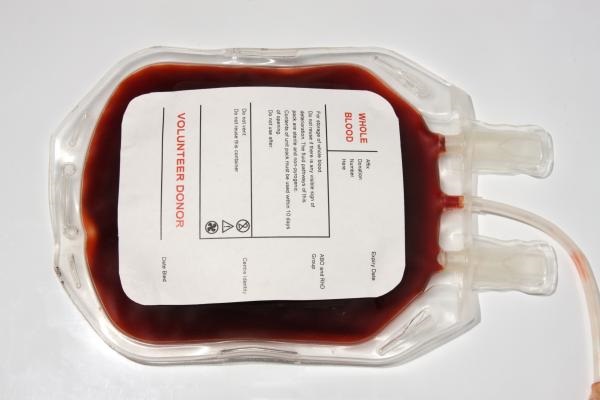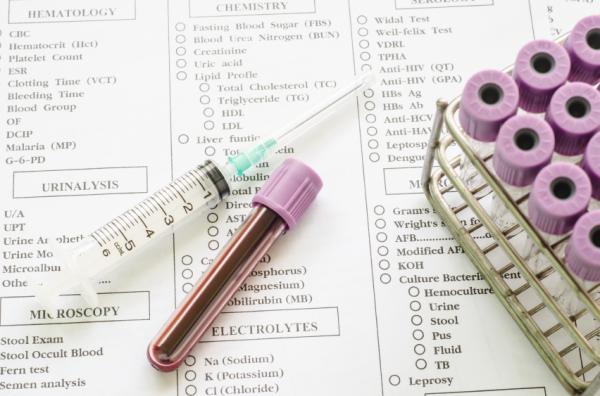A person's blood group is an important clinical fact to know, especially in certain situations such as when donating blood, to receive a transfusion or in a surgical operation. But, since it is information that can be dispensed with for routine medical consultations, many people are not interested in knowing what their blood type is.

As with the color of hair or eyes, blood groups are passed from parents to children by genetic inheritance. They all depend on the proteins exhibited by the red blood cells that circulate through the arteries and veins. To discover how to know my blood type, the varieties that exist and their respective compatibilities, at. we recommend that you continue reading this article.
What types of blood are there?
There are two classifications to determine the blood group: the AB0 system and the RH factor. The letter that gives name to the varieties of blood of the AB0 classification corresponds to a protein (A, B and 0) with the ability to coat, or not, the red blood cells. The blood may also have antibodies that react to another type of blood that is not of its group.
On the one hand, the 4 blood groups of the AB0 system are the following:
- A: contains protein A and anti-B antibodies.
- B: contains B proteins and anti-A antibodies.
- AB: contains both proteins, but neither of the antibodies.
- 0: Contains no protein, but does contain both types of antibodies.
On the other hand, blood can also be classified according to whether it has another group of proteins called Rhesus factor or RH factor in the red blood cells:
- RH +: if you have the cell surface proteins.
- RH -: absence of cell surface proteins.
In this way, there are a total of 8 blood groups: 0 positive (0+), 0 negative (0-), A positive (A+), A negative (A-), B positive (B+), B negative (B-), AB positive (AB+), and AB negative (AB-).
In Spain, approximately 45% of the population belongs to blood group 0 and 42% to group A. The rest of the people are divided between group B with 10% and group AB with 3%. Throughout the planet, group 0 positive (0+) is the most common, especially in the Hispanic population; among Asians there is a relatively high number of group B people compared to the rest of the countries.
What are compatible blood types?
Taking into account the eight blood groups that exist, these are their compatibilities between them:
- A +: is one of the most common blood groups. You can donate to group A positive and group AB positive. In addition, it can receive blood from A positive and negative and from 0 positive and negative.
- A -: Individuals belonging to this group can donate blood to AB positive and negative and to A negative and positive. They can receive blood from A negative and 0 negative.
- B+: You can donate to AB positive and B positive people, and you can receive blood from 0 positive and negative and B positive and negative people.
- B -: this blood group can donate to AB positive and negative and to B positive and negative. Receive donations from 0 negative and B negative.
- AB +: donates blood to AB positive and is a universal recipient, that is, it can receive blood from all blood groups.
- AB -: donates blood to AB positive and negative and receives blood from A negative, B negative, AB negative and 0 negative.
- 0+: donates to A positive, B positive, AB positive and 0 positive and receives blood only from 0 positive and negative.
- 0 -: it is a blood group that can donate to all the other types, it is the universal donor, but it only receives blood from it. Learn more about this blood group by reading this other article about Which is the universal donor.
How do I know what blood type I have?
In order to identify your own blood group, you just need a blood test. Even so, you must tell the health professionals who treat you that you want to know this clinical data for its determination. In addition, the blood type is also reflected in the clinical history if you have received a blood transfusion, as well as in the family book. The data of the type of blood you have can also be known after a blood donation, since the information is also provided in this case. In any case, if you do not have any of the aforementioned documents, with a blood test you can find out what type of blood you have, since it can determine the RH factor and the group.
To determine it accurately, the AB0 test must first be done to find out the blood group, the sample of which is mixed with antibodies A and B to check their reaction. The second step in determining blood type involves mixing the blood sample with some serum for the RH factor test.
Now that you know all this new information about how you can know your blood type, we recommend you read this other article on How to donate blood.







